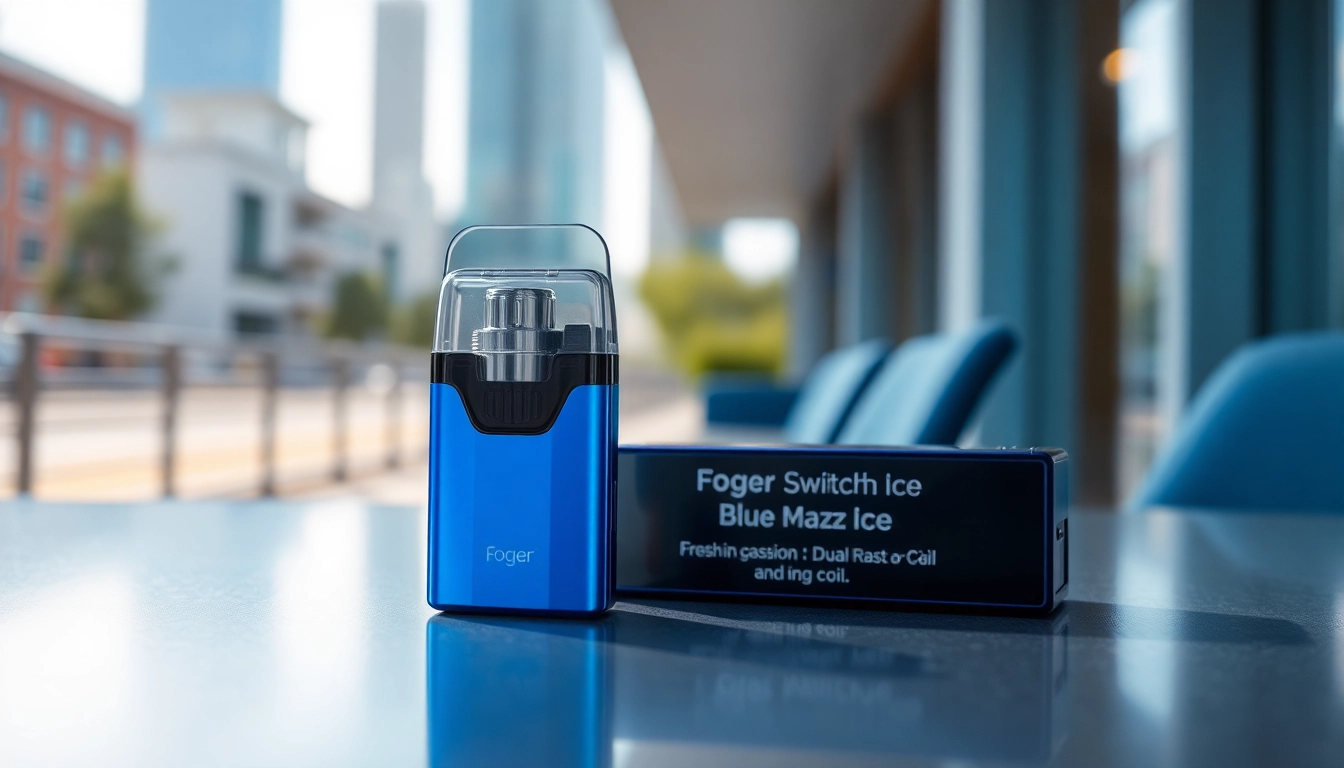Understanding Thermal Management Materials
In today’s fast-paced technological landscape, the effective management of heat is vital for ensuring the longevity and performance of electronic devices. This is where thermal management materials come into play. These specialized materials are engineered to dissipate heat efficiently, allowing electronic components to operate within safe temperature ranges. This section delves into the definition, types, and applications of thermal management materials, establishing a foundational understanding for further exploration.
What are Thermal Management Materials?
Thermal management materials encompass a variety of substances designed to optimize heat transfer between components. Essentially, these materials create an efficient pathway for heat to escape from heat-generating components, such as processors and power supplies, to heat sinks or ambient environments. By reducing thermal resistance, they play a crucial role in enhancing device performance, preventing overheating, and prolonging operational lifespan.
Types of Thermal Management Materials
Thermal management materials can be broadly categorized into various types, each with unique properties and applications:
- Thermal Interface Materials (TIMs): These materials, often found between semiconductors and heat sinks, enhance thermal conductivity. Common TIMs include thermal pastes, gels, and pads, each tailored to specific assembly requirements.
- Phase Change Materials (PCMs): These materials absorb and release thermal energy through phase transitions (e.g., solid to liquid). PCMs are ideal for managing heat spikes in electronics, allowing systems to operate smoothly without significant temperature fluctuations.
- Thermal Insulation Materials: These materials prevent heat loss in applications where thermal retention is critical. Examples include aerogels and polyurethane foams used in various industrial settings.
- Thermal Conductive Adhesives: These are specialized glues that not only bond components together but also facilitate heat transfer between surfaces. They are common in electronic applications where high thermal conductivity is necessary.
Common Applications of Thermal Management Materials
Thermal management materials are utilized across various industries and applications, including:
- Electronics: In consumer electronics, such as smartphones and laptops, managing heat is critical to maintaining performance and component longevity.
- Automotive: Thermal management plays a vital role in electric vehicles and internal combustion engines, where efficient heat dissipation is crucial for battery performance and overall vehicle safety.
- Aerospace: In aviation technology, thermal materials ensure that critical systems operate reliably under extreme conditions.
- Renewable Energy: In solar panels and wind turbines, thermal management materials help optimize performance and durability by efficiently managing heat transfer.
The Importance of Effective Thermal Management
Effective thermal management is not merely a technical necessity but a critical factor that impacts the functionality and reliability of electronic systems. This section discusses how these materials enhance performance, the challenges they face, and the standards governing their use.
How Thermal Management Materials Enhance Performance
Thermal management materials significantly enhance the performance of electronic devices by:
- Reducing Overheating: By efficiently dissipating heat, these materials prevent overheating, which could otherwise lead to device failure or performance throttling.
- Improving Efficiency: Devices operate more efficiently at lower temperatures, translating to better overall performance and lower power consumption.
- Increasing Reliability: Proper thermal management extends the life of electronic components, reducing maintenance costs and improving operational uptime.
Challenges in Thermal Management Solutions
Despite their advantages, implementing effective thermal management can present several challenges:
- Material Selection: Choosing the right thermal management material involves balancing thermal conductivity, compatibility with other materials, and cost-effectiveness.
- Manufacturing Process: Incorporating thermal management materials into existing manufacturing processes can require significant changes to equipment and techniques.
- Performance Under Varying Conditions: Thermal management materials must perform effectively across a range of operating temperatures and ambient conditions, which may not always be achievable.
Key Industry Standards and Practices
Adherence to industry standards is essential for ensuring that thermal management materials meet safety and performance criteria. Key standards include:
- ISO 9001: This international standard outlines the requirements for a quality management system, ensuring consistent product quality.
- IPC Standards: These are standards for electronics manufacturing providing guidelines on best practices across various components, including thermal management solutions.
- ASTM Standards: The American Society for Testing and Materials provides a set of specifications and testing methods to evaluate material performance.
Selecting the Right Thermal Management Materials
The selection of thermal management materials requires careful consideration of various factors to ensure optimal performance. This section provides insights into what to consider when choosing materials and compares popular options.
Factors to Consider When Choosing Materials
When selecting thermal management materials, several factors should be taken into account:
- Thermal Conductivity: The primary purpose of thermal management materials is to conduct heat away from components. Higher thermal conductivity values are generally favorable.
- Viscosity and Application Method: Depending on the application method (e.g., manual or automated), the viscosity of the material can significantly impact its usability.
- Compatibility: The chosen materials must be compatible with the surfaces they will contact, including adhesives and coatings.
- Cost: Budget constraints can influence material choice. While premium materials may offer superior performance, cost-effective options are often available.
Comparison of Popular Thermal Management Materials
Here’s a comparison of some widely used thermal management materials, examining their strengths and weaknesses:
| Material Type | Thermal Conductivity | Application | Pros | Cons |
|---|---|---|---|---|
| Thermal Interface Paste | Up to 20 W/mK | CPUs, GPUs | High thermal conductivity, easy application | Can dry out over time |
| Thermal Pads | Up to 6 W/mK | General electronics | Easy to install, no curing time | Thickness limitations |
| Phase Change Materials | Up to 10 W/mK | Dynamic heat applications | Efficient thermal management | Temperature-dependent performance |
| Thermal Conductive Adhesives | Up to 5 W/mK | Permanent bonding | Strong bonding capability | Long cure time |
Case Studies of Successful Implementation
To illustrate the effectiveness of thermal management materials, we can look at some successful case studies:
Case Study 1: Consumer Electronics
In a recent smartphone facility, a combination of thermal paste and thermal pads drastically improved heat dissipation from the device’s processor. As a result, the manufacturer noted a 25% increase in battery life during extended use, coupled with improved device performance under intense loads.
Case Study 2: Electric Vehicles
An electric vehicle manufacturer integrated phase change materials into their battery packs to manage thermal spikes during charging. This implementation reduced overheating incidents by 40%, leading to higher consumer satisfaction and product safety ratings.
Future Trends in Thermal Management Strategies
As technology evolves, so do the strategies surrounding thermal management. This section explores emerging trends and innovations that may shape the future of thermal management materials.
Innovations in Thermal Management Materials
Research into new materials and innovations is ongoing, with several promising trends emerging:
- Nanomaterials: Enhanced thermal conductivity through nanotechnology is providing materials with unprecedented heat transfer capabilities.
- Smart Thermal Materials: These materials monitor their thermal properties in real-time, adjusting accordingly to optimize performance.
- Bio-Based Thermal Materials: Sustainability is becoming a focal point, leading to the development of eco-friendly thermal management options that do not compromise on performance.
Impact of Technology on Heat Management Solutions
The accelerating pace of technological advancements necessitates evolving heat management solutions. As devices become smaller and more powerful, thermal management materials must adapt to ensure efficient thermal control.
Predictions for the Next Decade in Thermal Management
Looking forward, several predictions can be made regarding the future of thermal management:
- Increased Emphasis on Sustainability: As environmental concerns grow, the market for sustainable thermal management materials will expand.
- Integration with IoT: Future thermal management systems will likely integrate with Internet of Things (IoT) technology, enabling dynamic thermal monitoring and management.
- Advancements in Simulation Technologies: Enhanced simulation tools will allow engineers to model and predict thermal behaviors more accurately, leading to better designs and material selections.
Resources for Further Learning on Thermal Management
As the field of thermal management continues to develop, several resources can help deepen understanding and broaden knowledge:
Industry Associations and Publications
Joining professional organizations and subscribing to relevant journals can provide valuable insights and ongoing education in thermal management practices.
Training and Certification in Thermal Management
Consider pursuing certifications and training programs in thermal management to ensure a comprehensive understanding of the latest materials and techniques available.
Networking Opportunities in Thermal Management Technology
Attending conferences, expos, and workshops related to thermal management can foster connections with industry leaders and peers, sharing insights and innovative practices.















Leave a Reply